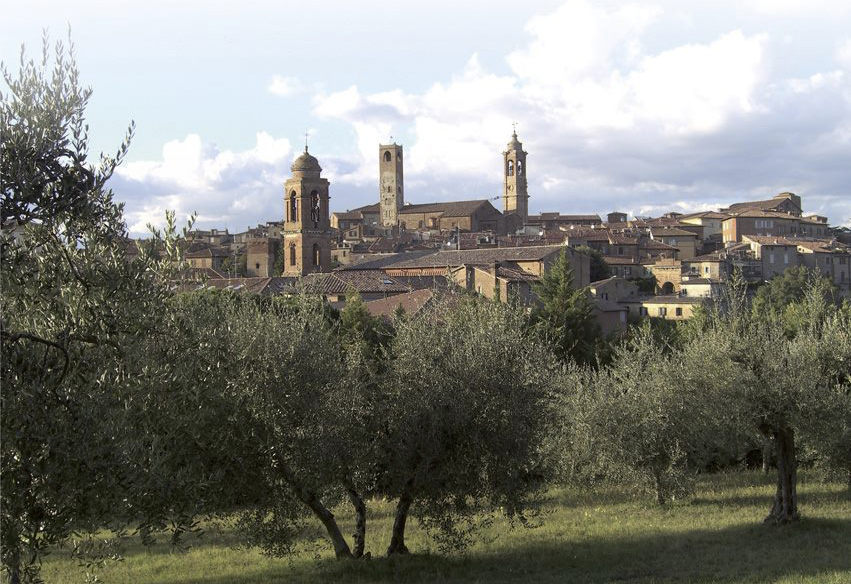Although Città della Pieve is located in the heart of Italy, its history is that of a border town. These towns are special because they have traces of different cultures that overlap through the centuries and blend together to create a unique style and spirit.
Since medieval times this unique city has been built with red bricks that contrast the sky creating an image that it is easily recognizable. It began its history as a border town of the Etruscan world and each day new connections are found such as the recently discovered Laris tomb. The Etruscans were one of the first town building peoples to inhabit Italy, arriving perhaps from Turkey, and the first kings of Rome were all Etruscan.
Then came the peoples from Northern Europe and Citta della Pieve once again found itself to be a boundary, this time between the Western Roman Empire and the Kingdom of the Lombards, of which it was the lookout point towards Perugia. In witness Via Lombardia (now Via Manni) runs through the center of this historic town.
Probably because of its strategic position, the bishops built a first Pieve, or a country church with baptismal functions, dedicated to the patron saints Gervasio and Protasio. The churches were the way the rising Papal States declared its religion and expanded. Around the churches villages were subsequently born that grew into towns. After the Church came the military fortress, clear expression of the dualism between the kingdom of heaven and earthly kingdom.
That space between heaven and earth is occupied by the birds of which the best observers and predators are the eagles. Maybe that's why the shape of medieval urban Citta della Pieve is that of an eagle looking towards Rome. The body of this eagle was clearly divided into three parts, "Terzieri", which correspond to three different social classes that still compete in the famous annual Terzieri contest. The head (third castle) corresponded to the Knights and the aristocracy, the belly (Terziere Inside Borough) corresponded to the bourgeoisie and finally the wing-tail (Terziere Casalino) to the farmers. The challenge of the Palio die Terzieri recalls the bull hunt and participants compete in races involving archery with artificial bull silhouettes.
At the end of the medieval period municipalities or self governing towns arose and here Città della Pieve finds itself between Florence, Siena, Perugia and an increasingly belligerent and strong papal state. Always searching for its independence, proudly ghibelline (in favor of the emperor), it finally managed to be a free city thanks to Emperor Frederick II who reigned from 1228 until 1250. Prosperous with its businesses but never extremely rich.
Its role as a "hinge" can be understood well during the trial of John of Parma, head of the Franciscans. Assisi is not far from here and when St. Francis "won" his challenge with the pope and his order was recognized, the successor of St Francis was prosecuted here in Citta della Pieve in 1262. Just to make it clear who has the real power on earth.
In the renewed climate of freedom and well-being of the Renaissance, Pietro Vannucci (1448-1523), known as Perugino, one of the most important Italian painters, was born here. In Citta della Pieve you can find some of his masterpieces like the very particular Adoration of the Magi. This great fresco was commissioned by the Congregation of Santa Maria dei Bianchi to beautify their ‘home’. Today you can still visit here coming directly from Via Vannucci, the main street of town made solely of bricks. It seems to live history, in the room are hung white robes that the brothers still use for their ceremonies.
Coming out from the chapel into the street you have the same feeling of a plunge into history. Going up Via Vannucci you arrive at Corgna Palace, built by the Marquis Ascanio, nobleman of Perugia, governor of Città della Pieve and star of big business. Here you can enjoy a good cup of coffee in front of the Cathedral.
Or going to the Avvaloranti Theater to attend international opera.
Everywhere you look you find yourself in the center of the great beauty of the town, Umbria and Italy.
Strolling around Città della Pieve
- Claudia Bettiol
- Category: Special Places
powered by social2s








Follow us